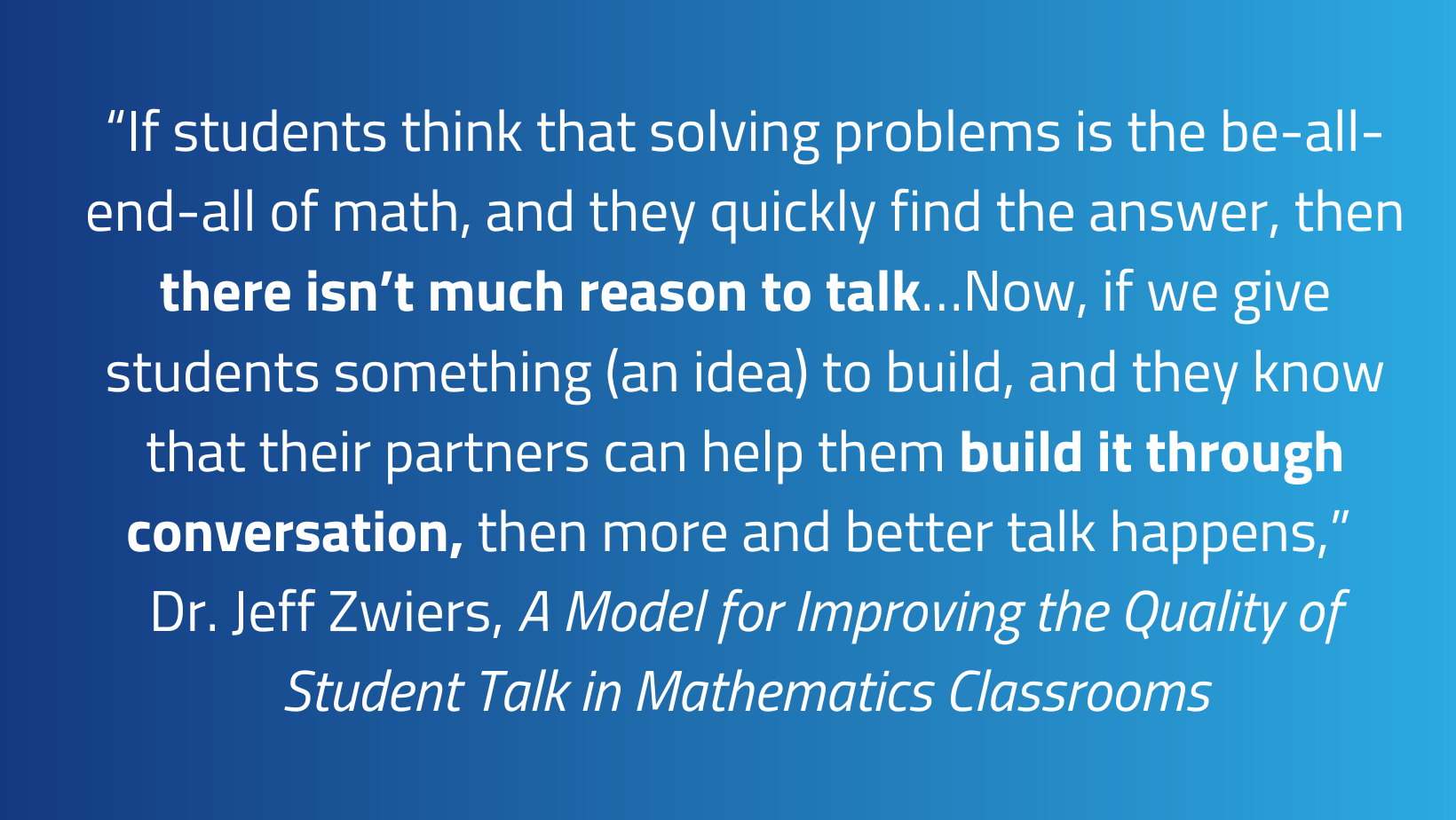Inclusive learning: Exploring California's Math Framework


Inclusive learning: Exploring California's Math Framework
The State Board of Education passed the new California Mathematics Framework over the summer. The updated guide will lead to changes in educators’ instructional techniques and impact what publishers adopt in curriculum. In particular, the emphasis on inquiry-based group work will bring significant challenges and opportunities for multilingual learners (MLLs).
Math Standards vs. Math Framework
Math standards are essentially the ‘what’ of is being taught in schools, while the framework is the ‘how.’ The math standards are not changing, but the implementation of the standards through curriculum and instructional approaches are.
Updating the framework is essential as we work to address opportunity gaps between the performance of various student subgroups, including English language learners. We must consistently review learning science to ensure that teachers are adequately equipped to meet the needs of all students.

An inquiry-based approach
One of the most notable changes in the framework is prioritizing inquiry and investigation into ‘big ideas’ of the grade. This form of experiential learning is a highly engaging way for students to develop their conceptual understanding. In order to investigate a concept, students need to be able to comprehend the idea or question, explore it with peers, argue their interpretations, explain their reasoning, and collaborate to formulate and articulate their conclusions.
Engaging in investigation requires language.

Necessary language supports
To effectively make the transition to inquiry-based learning, math teachers will need to provide students, particularly ELs, with purposeful language support.
In order to create a language-rich and inclusive classroom environment, resources like visuals, real-world applications, and purpose of language use should be in place.
Visuals
The framework references the importance of developing instruction and curriculum that are multidimensional, including the use of visuals, graphics, words, and numbers. This emphasizes the importance of using multiple ways to represent one mathematical concept. Techniques should include visuals like graphics during instruction, as well as use gestures and drawing to share ideas and discuss.

In Ellevation Math, key terms are paired with a visual anchor that students can reference throughout the unit and beyond. Primers also include integrated scaffolding such as synchronized text narration and highlighting, adjustable pace, and bilingual dictionaries, which allow all students to gain exposure to grade level mathematics while learning the language they need to succeed.
Real-world applications
In the framework, there is a call for “student investigations of intriguing, authentic problems.” An investigation is typically situated in a real world context, which can increase engagement as students feel the work is more relevant to their lives and can make connections to the world around them.

Ellevation Math Primers allow students to see themselves in authentic, culturally relevant situations. Our representation within Primers shows not just all cultures and backgrounds, but also all opportunities, so students can envision themselves in a variety of future roles.
Purpose
It is key that students are aware of the purpose for which they're using language. For example, the language a student uses may shift depending on whether they are informing, explaining, or arguing. The framework emphasizes that teachers need to focus on purposeful and productive questions, moving beyond questions that demand a simple answer or recall.

Ellevation Math structures Confidence Questions to elicit more language-rich responses. Students are prompted to respond, using academic language for a purpose: to inform, argue, or explain;. They are then provided scaffolds to aid in developing rich responses that make their reasoning and purpose clear.

The learning opportunities outlined in the framework will benefit all students that are new to academic language, including multilingual learners, by providing the opportunity to see strong models of language use and rehearse that language. In addition, the use of modeled think-alouds will show students how to unpack complex and interesting questions and select strategies for exploring them. This will be essential for participating more fully in these investigative learning opportunities.
In the Confidence Question shown above, students have encountered academic language in context, as modeled throughout the Primer. They would then have the opportunity to practice using it in their written response prior to class, where they would engage in discourse and idea-building.
The new California Mathematics Framework represents a significant step forward in our commitment to ensuring equitable education for all students. By prioritizing inquiry-based learning and emphasizing the importance of purposeful language use, this framework offers a roadmap for educators to engage students in meaningful mathematical exploration.
As we implement these changes, we are not only addressing opportunity gaps but also empowering students to develop strong models of language use and critical thinking skills to ultimately become better learners.